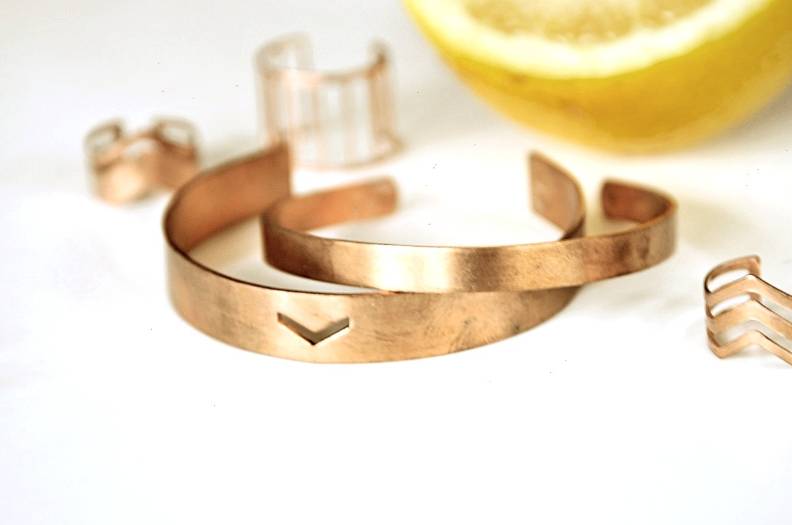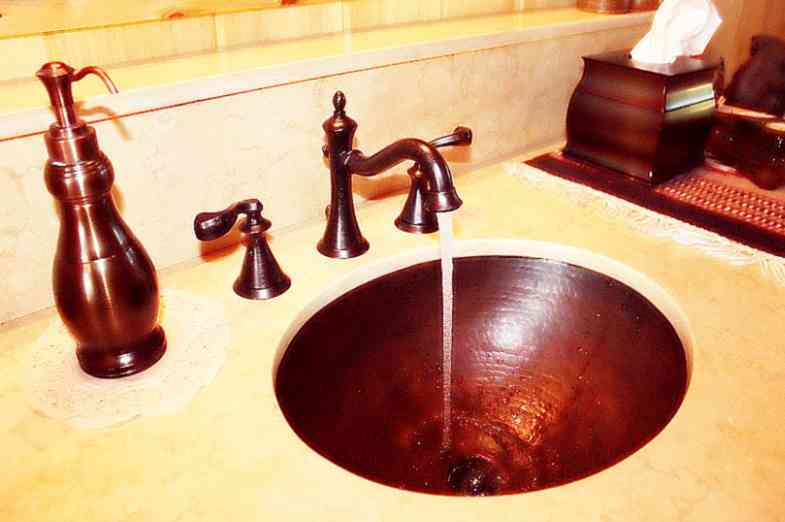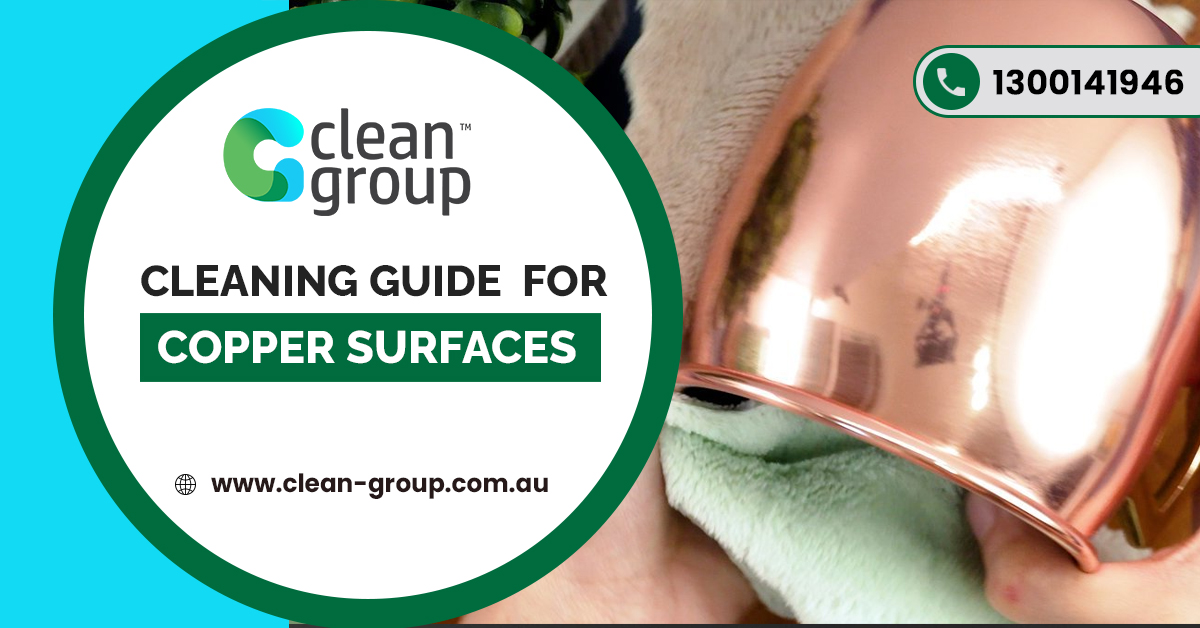Copper surfaces are beautiful to look at when they are clean. They bring an exciting feel to any room because copper surfaces can be a statement piece. However, when they begin to lose their shine, they can look dull and tarnished. Also, anything can make a copper surface dirty. It can be dirt, air, moisture, and even your skin’s natural oils.
There are a few ways to clean copper surfaces, so make sure to see which one is the easiest for you and try it out. This post is going to explain to you how to clean copper surfaces.
Before You Start

Check your copper surface because some have a lacquer finish. If they do, the following commercial cleaning methods should not be used to clean them. To figure out whether the surface is lacquered, grab a rag and dip it in white vinegar.
Afterward, dip it in baking soda, and rub it on a hidden spot on the copper surface. When the surface is not lacquered, this mixture can tarnish; if it is lacquered, it may not remove anything.
Also, check if this surface is copper-plated. When cleaning a copper-plated surface with one of the following methods, you could risk scratching it. One way to test your item is to place a magnet on the surface. If the magnet sticks, it is copper plated, but if it does not, you are all good to go with these cleaning methods.
Top tip: When cleaning copper-plated surfaces, all you need is some water and mild detergent. Use this mixture to clean the item before drying it. Afterward, buff it with some copper polish for a finished look.
Materials
These are the materials you are going to need in order to clean your copper surfaces:
- Lemons
- Kosher salt
- A sponge
- Drying/buffing towel
- Baking soda
Salt & Lemon
This method is excellent for copper pots and pans.
Step 1: Cut a Lemon & Scrub with Salt
Grab your lemon and cut it in half. Sprinkle a little bit of kosher salt onto the cut surface. Scrub the copper pot, pan, or mug with the lemon and watch the tarnish come off. Add some extra salt if it’s needed.
Step 2: Rinse & Dry
After getting rid of the tarnish, rinse your copper item under some running water. Dry it with a cloth and buff it out for a completely polished look.
Vinegar
Another way to clean copper is to use distilled white vinegar. First, place the copper item in the sink. Either pour a little bit of vinegar onto the surface or dip a sponge into it and squeeze out any excess vinegar. Grab the salt, sprinkle only a little bit onto the surface, and begin to scrub away. Repeat this process until all areas are clean.
Again, rinse the item with running water afterward and buff it out in order to have a well-polished copper item again.
Flour
Yes, copper can be cleaned with flour as well. You are going to mix a ½ cup of distilled white vinegar or lemon juice with one tablespoon of salt and enough flour to make a thin paste. Take the paste and put it on the copper surface. Begin to scrub away with a sponge or cloth. Afterward, rinse it with some running water and buff it out so it becomes a polished item again.
How to Clean Your Copper Jewelry
Some jewelry is made of copper, and it also becomes tarnished after some time. However, it is easy to clean it back to its original shine. Grab a lemon and squeeze enough juice into a bowl that can cover the jewelry thoroughly. Add one or two teaspoons of salt to the bowl. Add the jewelry into the mixture and allow it to soak for a few minutes.
Afterward, rinse the jewelry under some running water and buff it out dry so it becomes polished once again.
How to Clean Your Copper Sink

Before beginning the cleaning process on your sink, make sure to check its manual first because there might be some instructions in there. Also, do not use any acidic or abrasive cleaning products when cleaning a copper sink. This can completely ruin your sink and leave it looking tarnished and unpolished.
Instead, use a few drops of dishwashing soap and a soft sponge or dishcloth. Scrub the sink nicely before rinsing it with some warm water. Lastly, buff it out with a dry towel so it looks clean and polished once again.
In the case of tougher stains, mix some baking soda and a couple of drops of water to form a paste. Once the paste is ready, apply it to the sink with a sponge and scrub away. Afterward, rinse the sink with some warm water and dry it with a clean cloth. Then, it is going to look clean and fresh once again.
One Secret Step
There is one secret tip that many do not know: the use of baby or mineral oil. After thoroughly cleaning your copper item, wipe a light mineral or baby oil coat to avoid future tarnishing. The problem with copper is that it begins to tarnish as soon as it’s cleaned, but the oil is able to slow down this process.
You decide what kind of mineral or baby oil you want to use when it comes to this step. Also, be mindful about using it on cookware because you may not want to put it directly in the pan. Again, it is your choice, so pick what suits you best.
More Post: What is the Best Time for Commercial Space Cleaning?
Common Mistakes to Avoid When Cleaning Copper
- Using Abrasive Tools: Avoid steel wool or rough sponges that scratch and damage copper surfaces.
- Applying Acidic Cleaners on Plated Copper: Acids like vinegar can eat away thin copper plating, causing discoloration.
- Cleaning Lacquered Copper with Harsh Methods: Acidic or abrasive cleaners strip lacquer coatings, exposing copper to damage.
- Leaving Copper Wet: Moisture causes water spots and speeds up tarnishing—always dry thoroughly.
- Skipping Regular Cleaning: Dirt and grime buildup make tarnish harder to remove and can cause permanent damage.
Frequency of Cleaning & Maintenance Tips for Copper
- Kitchen Copper: Clean after every use; polish monthly.
- Copper Jewelry: Clean every few weeks or when dull.
- Copper Sinks/Faucets: Wipe after each use; deep clean biweekly.
- Decorative Copper: Dust weekly; clean every few months.
Maintenance Tips: Dust regularly, avoid direct sunlight, wipe spills immediately, and never use harsh chemicals.
More Post: What Do Manufacturing Plant Cleaning Services In Sydney Include?
Before and After Care for Copper Cleaning
| Before Cleaning | After Cleaning |
|---|---|
| Check for lacquer or plating and test cleaners on a hidden spot. | Rinse well and dry immediately to avoid water spots. |
| Prepare all cleaning supplies before starting. | Apply a thin coat of mineral or baby oil, or use a specialized copper wax for protection. |
| Store copper items in dry, low-humidity places or airtight bags for jewelry. |
Conclusion
Copper surfaces are beautiful to look at, so make sure to maintain them with a few cleaning practices. With proper maintenance, then your copper surfaces are going to last for a very long time. Also, they are always going to be a statement piece in any home, office, or setting. With such beautiful pieces, it would be a shame if they were ruined.
Make sure to check that your copper items are not lacquered or copper plated before using any of the above cleaning methods. Otherwise, you may ruin them.

